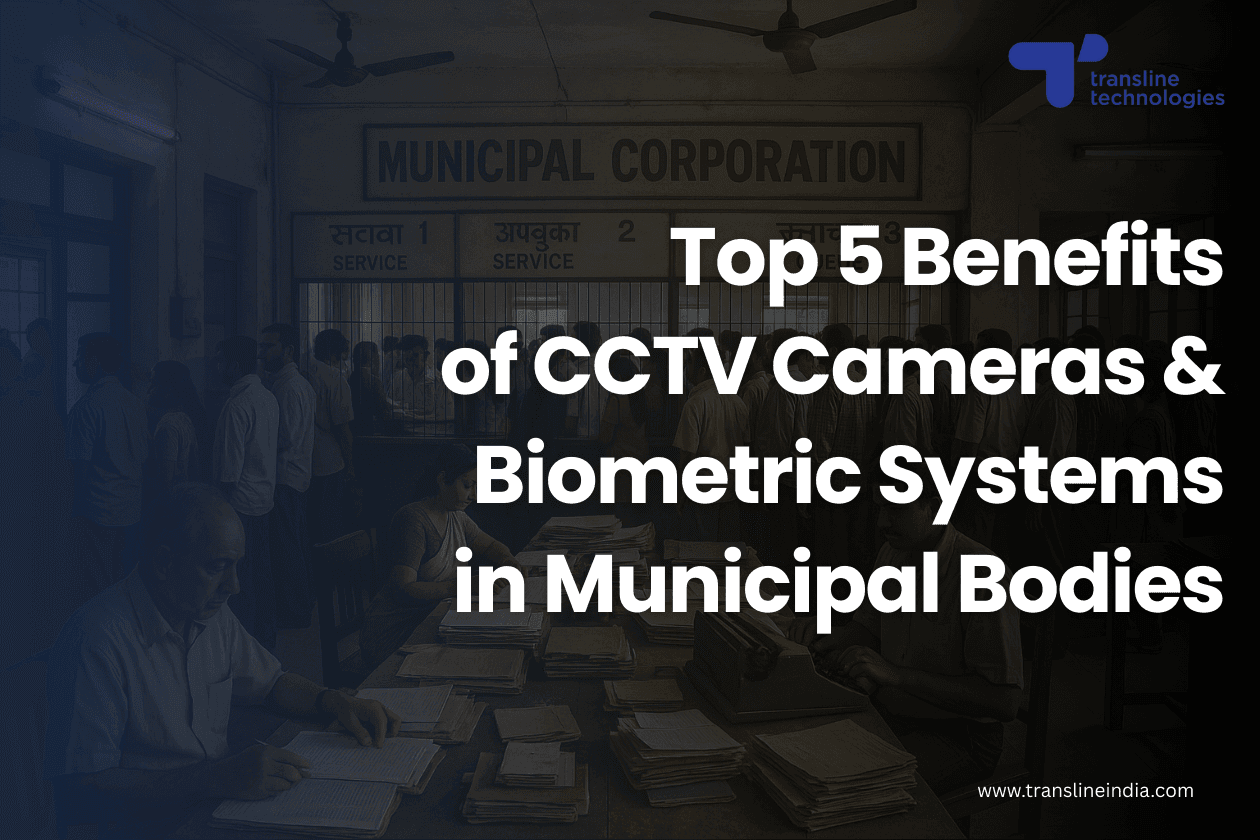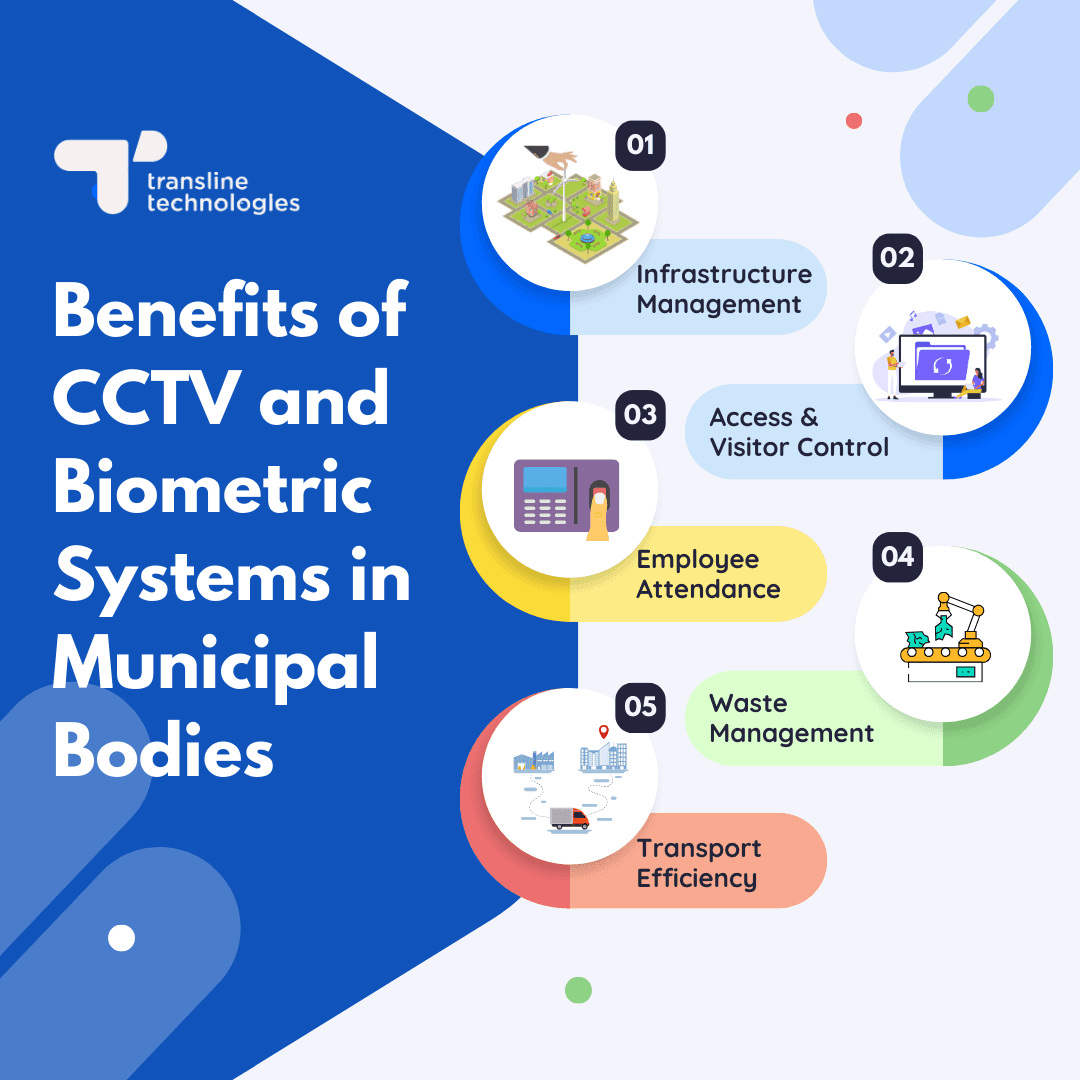
The first municipal corporation in India was established in Chennai (then Madras in 1688). Subsequently the municipal corporations of Mumbai (then Bombay) and Kolkata (then Calcutta) were set up to ensure better governance for the urban residents. Post independence, and more specifically, over the last 15 years, municipal corporations in India have significantly transformed urban governance by embracing digitalisation, with an increasing focus on municipal security and efficient urban resources management.
The Digital Evolution of Municipal Corporations in India
The integration of city surveillance systems, such as municipal CCTV cameras, has become a core strength for municipal corporations in India in ensuring public safety and reducing crime. Municipal CCTV surveillance networks provide real-time monitoring, improving overall urban security. This technological shift also aids in efficient and automated traffic management and disaster response. Municipal surveillance systems have evolved into sophisticated tools for urban administration, offering transparency, accountability, and quick access to critical data. As municipalities continue to embrace digital tools, the future of urban management looks more secure and streamlined, with technology playing a pivotal role in smart city governance.
Core Applications of CCTV and Biometric Systems in Municipal Corporations
At the core of digital governance of municipal corporations are two broad technological pillars — CCTV surveillance, and Biometric Attendance and Access Control systems. While every corporation employs its own set of municipal CCTV cameras and biometric systems, and for different purposes, we have attempted to classify these applications under some broad pointers.
Infrastructure Management and Maintenance
CCTV cameras have become essential for infrastructure management and maintenance within Indian municipal corporations. With municipal CCTV surveillance, authorities can closely monitor the condition of roads, public buildings like municipal libraries, bus stops, and commercial buildings under municipal ownership. AI-powered municipal CCTV cameras are particularly beneficial, as they can proactively detect issues such as cracks, wear and tear, or other signs of deterioration in real-time. For example, these municipal surveillance cameras can instantly alert the authorities about any damage to public amenities, enabling swift maintenance actions. Additionally, city surveillance systems assist in monitoring parks and other public spaces, helping keep roads in good condition. By using AI to predict potential infrastructure failures, municipal corporations find it easier to address problems before they become aggravated, thus ensuring continuous and efficient city operation.
Access Control and Visitor Management
Municipal Corporation facilities such as sewage treatment plants, waste management plants, water pumping stations, libraries and common service centres are sensitive zones, and hence need to be duly protected from intrusions and trespassing. Traditional access control systems in municipal facilities deployed Bar-code scanning or manually controlled gates, which were not only susceptible to identity spoofing but also frustrating to use. Modern AI-powered municipal CCTV cameras use facial recognition to regulate access of employees to restricted areas of the office, such as store rooms, control rooms etc. AI municipal surveillance cameras can detect any attempt of intrusion in real-time and trigger alerts to the concerned security persons on duty. Moreover, many municipal corporations are installing biometric-based Visitor Management Systems. These municipal biometric systems involve an app where the visitors create their profiles by uploading their photographs and other details, authenticate it with their Aadhaar or PAN details, and then check in at the municipal body’s office by using the facial recognition system. This reduces the hassle of generating physical entry slips for municipal corporation employees as well as visitors, and is also more secure as accurate logs with entry timestamps are saved in the database for future reference.
Attendance and Payroll Management for Municipal Corporation Employees
Biometric-based attendance management systems are increasingly being utilized by Indian municipal corporations to enhance efficiency, reduce fraud, and improve payroll management. Technologies such as palm vein recognition, fingerprint recognition, iris pattern recognition, and AI-powered facial recognition are being integrated to track employee attendance in a secure and accurate manner. These systems are designed to ensure that only the registered individual can mark their presence, eliminating issues such as proxy attendance.
A key feature of these systems is their integration with the Aadhaar database. By linking biometric data to Aadhaar, municipal corporations can verify the identity of employees using the national biometric database, ensuring secure authentication. Palm vein recognition, fingerprint matching, iris patterns, and facial recognition all provide unique, highly secure methods of identification for employees, ensuring the system's reliability.
In addition to attendance tracking, these biometric systems are also directly connected to payroll management. The accurate attendance data gathered through biometric systems automatically feeds into the payroll system, ensuring that employees are paid based on their actual working hours. This integration helps prevent errors and discrepancies in salary calculations, promoting fairness and transparency. Municipal corporations across India have been implementing these systems in line with government circulars to enhance employee management and governance, ensuring accountability and better public service delivery.
Waste Management
Municipal corporations in India are increasingly using AI-powered CCTV surveillance to improve waste management in urban areas. By integrating advanced municipal CCTV cameras into city surveillance systems, local authorities can monitor public spaces, garbage bins, and waste collection points in real time. AI technology analyzes footage from municipal CCTV surveillance to detect overflowing bins, littering, or illegal dumping activities. These insights allow municipal corporations to take prompt action, ensuring cleaner streets and timely waste collection.
Moreover, AI algorithms can predict high-traffic areas where waste accumulation is more likely, enabling proactive measures such as frequent collection. Municipal security is also enhanced by tracking illegal waste disposal practices, which can be penalized. With the help of municipal surveillance, municipalities can optimize routes for waste collection vehicles, saving resources and reducing environmental impact. This tech-driven approach is helping municipal corporations in India maintain cleaner cities while improving operational efficiency in waste management. In 2023, Municipal Corporation of Delhi started piloting digital city surveillance for better waste management.

Efficiency Improvement for Public Transportation
Many Indian Municipal corporations are leveraging AI-powered municipal CCTV surveillance to enhance public transportation management, focusing on optimising operations and ensuring passenger safety at bus stands and inter-state bus terminals (ISBTs). For instance, in Chandigarh, AI-enabled CCTV cameras have been installed at bus queue shelters to monitor commuter numbers and analyze usage patterns, aiding in efficient scheduling and resource allocation. Similarly, in Bhubaneswar, the Bhubaneswar Development Authority plans to deploy AI-based CCTV cameras along service lanes near the Babasaheb Bhimrao Ambedkar Bus Terminal to monitor bus movement and prevent haphazard parking, thereby improving traffic flow and safety.
These AI systems can detect crowd density, identify unauthorised activities such as pickpocketing and bullying, and monitor bus schedules in real-time, providing valuable data to municipal authorities. This integration of AI with municipal surveillance not only enhances operational efficiency but also contributes to better municipal security by enabling prompt responses to incidents. By adopting such technologies, municipal corporations are modernizing public transportation infrastructure, leading to improved commuter experiences and more effective management of urban transit systems.
Kolkata Municipal Corporation is also planning to implement AI city surveillance for controlling the menace of illegal parking on the arterial roads, and send automated alerts of fine imposition to the vehicle owners, using ANPR algorithms.
Challenges in Implementation of CCTV and Biometric Systems in Indian Municipal Bodies
Indian municipal bodies are increasingly deploying municipal CCTV surveillance and biometric systems to enhance urban governance and security. Yet, several obstacles hinder their effective and ethical implementation:
Public Opposition Over Privacy
Many residents and civil rights groups oppose city surveillance initiatives, citing inadequate safeguards for biometric and video data. Concerns are particularly sharp in areas lacking data protection oversight.
Absence of Local Consent Mechanisms
Municipal CCTV camera installations often proceed without public consultations. This lack of transparency fuels distrust, especially in communities already wary of state monitoring.
Maintenance and Infrastructure Gaps
Poor upkeep, limited technical staff, and inconsistent electricity or internet supply result in frequent system breakdowns, reducing surveillance effectiveness.
Legal Ambiguities
Municipal surveillance efforts frequently operate without clear legal frameworks, unlike police-run systems. This creates confusion about data responsibility and redressal mechanisms.
Unequal Surveillance Burdens
In several cities, municipal biometric and CCTV systems are concentrated in marginalized areas, raising ethical questions about profiling and disproportionate monitoring.
Cost Considerations
Installation of municipal surveillance systems involves significant initial capital expenditure, as well as operational costs such as annual maintenance, cloud-server storage costs, power and internet connectivity costs.
For municipal security to be effective and democratic, it must balance safety goals with transparency, accountability, and citizen rights.
The Road Ahead for Smarter Municipal Corporations
At Transline Technologies, we are empowering municipal corporations across India with AI-powered CCTV surveillance solutions to improve governance, better manage critical infrastructure and safeguard public assets. Our municipal surveillance solutions and municipal biometric solutions are robust, scalable and customisable. We offer end-to-end municipal biometric solutions, allowing employees to mark their attendance through any one or combination of the following technologies:
- Fingerprint scanning
- Palm-vein recognition
- Free-flow Camera-attendance (facial recognition)
- QR-based attendance with geo-fencing
- Out-station duty (OSD) requests with location tracking
Connect with Us today to explore which biometric attendance solution and surveillance solution will best suit the requirements of your Municipal Corporation. We are keen to solve new problem statements to enable municipal bodies to better serve their residents with enhanced governance and quality of urban infrastructure. We are committed to building smarter cities for realising the vision of Digital India and a sustainable future.



